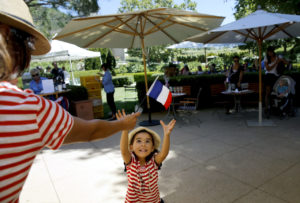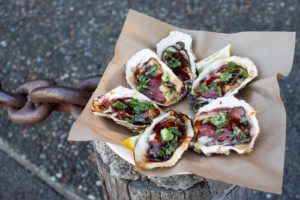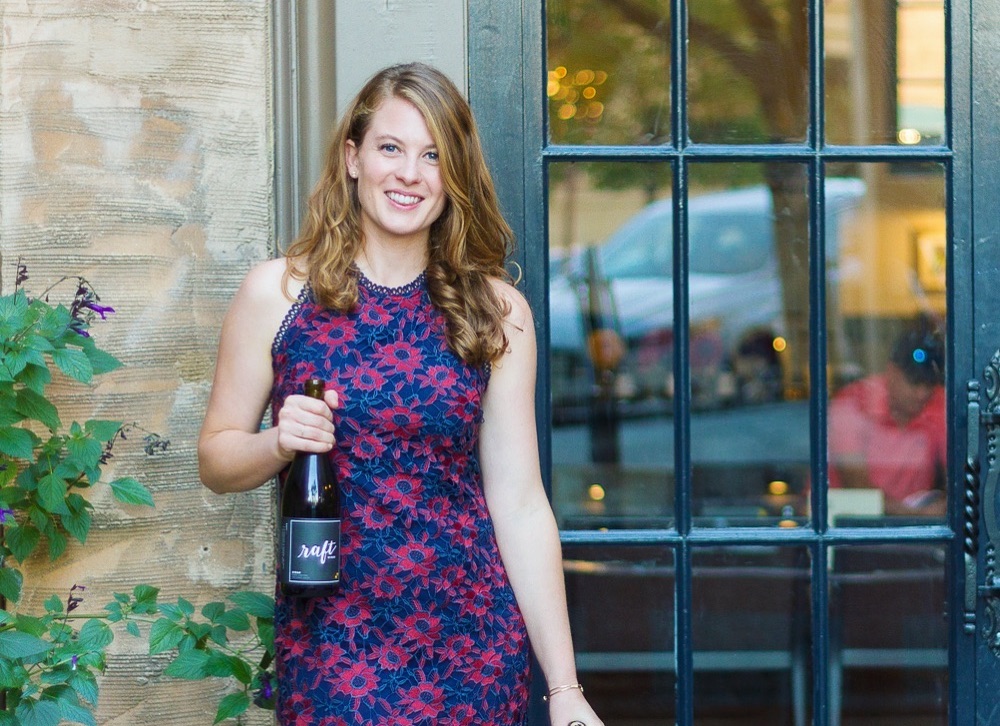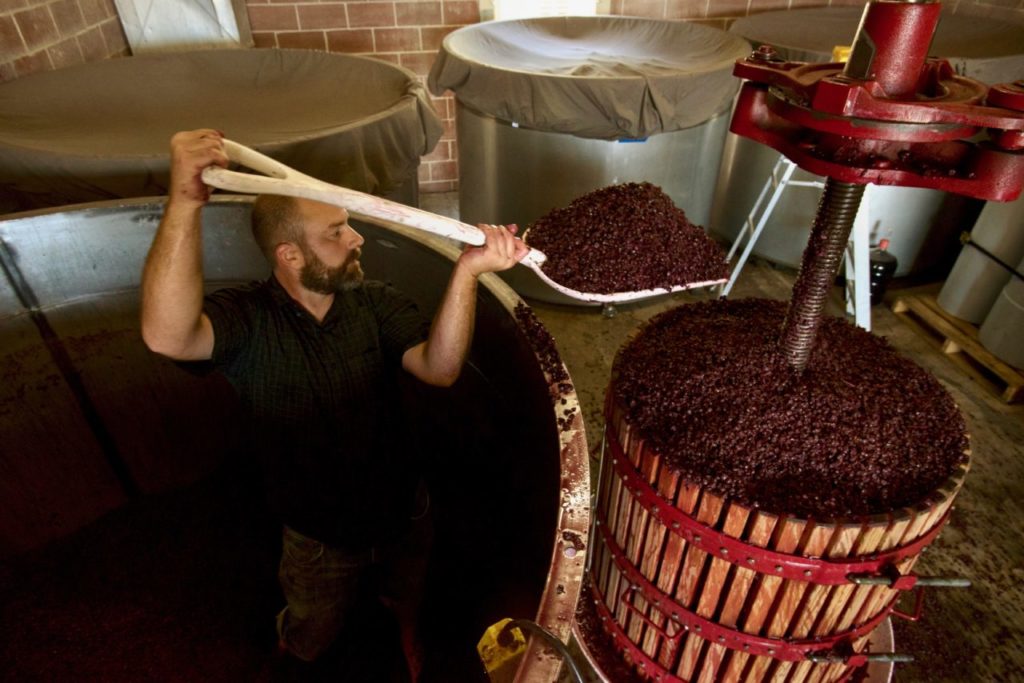Flying mostly under radar, there are dozens of Sonoma wineries making micro-amounts of wine — many without high-tech production facilities or tasting rooms, selling directly to the public. Here are eight worth seeking out.
Caleb Leisure Wines
Many visitors to the Republic of Georgia return home to rave about the wines and the novelty of them being fermented in clay pots buried in the ground. Winemakers around the world experiment with in-ground clay vessels, but Sonoma’s Caleb Leisure might be the only one in the US to use authentic qvevri from Georgia, costing thousands of dollars each. Not an oak barrel in sight. The oval-shaped qvevri are lined with beeswax and are stored in a Sonoma Mountain hillside, behind Coturri Winery. Leisure was lured to winemaking specifically by the natural, sulfur-free qvevri method, and in 2017, began fermenting Viognier, Sauvignon Blanc, Syrah, Mourvedre and other grapes underground. He’s up to 1,000 cases of natural wines a year, with more story behind them that marketers can’t buy. The wines are unfiltered, keeping with the natural theme, yet remarkably bright.
Enriquez Family Wines
Cecilia Enriquez’s father, Eduardo, was intrigued by the wine business; she was not impressed working for a bank and agreed to help him. Cecilia was 22 when she discovered Sonoma, and it became the place she and her New Jersey family would purchase vineyard land and start their brand in 2011. Now the proprietor and president of the company, Cecilia works with her winemaker husband, Dana von Sternberg (Vokel Cellars), at their rustic barn winery in Forestville. Among her unusual wines: aged (and brilliant) dry Muscat and a Brisa white blend from Russian River Valley, and two Tempranillos from the Petaluma Gap. The Forestville estate vineyard is prominently Pinot Noir and is another, more traditional focus for Enriquez.
Idle Cellars
Berkeley resident Ari Heavner and Southern Californian Ben Larks connected in 2006 while working harvest in Sonoma. Soon thereafter, they founded Idle Cellars and are going strong, 13 years later. They took the classic California winemaking path, producing micro-lots of Grenache Blanc, Sangiovese, Cabernet Sauvignon, Merlot and other wines, from such Sonoma vineyards as Los Chamizal in Sonoma Valley, Mounts in Dry Creek Valley, Peaceland in the Fountaingrove District and Catherine Bonneau in Los Carneros. Heavner and Larks own no vineyards nor winemaking equipment, employing a custom-rush facility and doing all the work themselves. The brand name comes from the idle time the friends enjoy, drinking wine with family and friends.
Jolie-Laide Wines
Restaurateur Scott Schultz transitioned to winemaking in 2007, working for Pax Mahle, among others. His personal label, Jolie-Laide (it loosely translates to “beautiful-ugly,” reflects his choice of unglamorous grape varieties, among them Melon de Bourgone, Valdigue and Trousseau Gris. Like many independents, Schultz sources fruit from within and outside Sonoma, including Mendocino, Monterey and El Dorado counties. Some of his whites are given some skin contact during fermentation, adding richness and texture; the Trousseau Gris from Peter Fanucchi’s Russian River Valley vineyard is a fine example.
Martha Stoumen Wines
Stoumen makes her wines at Pax Mahle Winery at The Barlow in Sebastopol and has earned an avid following for what she doesn’t do to the juice. She is a local face for natural wines, those produced with as little human intervention as possible. That means organically grown grapes, no commercial yeasts for fermentation, and little, if any, post-fermentation stabilizers or enzymes. The Sebastopol native does add small amounts of sulfur as a preservative, but the goal is for her wines reflect the place they were grown, without masking the character with additives. Her Nero d’Avola comes from the warm interior of Mendocino County. There is also a sparkling Zinfandel, unusual blends and a more traditionally styled Petite Sirah. Like many “natural’ wines (there is no official definition for the term), a Stoumen wine occasionally has a funky note, and she’s OK with that.
Raft Wines
Jennifer Reichardt grew up on her family’s duck farm near Petaluma. Her father, Jim Reichhardt, established the Liberty Duck brand, prized by chefs everywhere. Jennifer is now chief operating officer of the company and makes time to produce Raft Wines – a raft is a group of ducks – for which she sources Picpoul Blanc and Grenache Blanc from El Dorado County, Counoise and Viognier from Madera County, and Syrah from Sonoma. Low alcohol levels and food-friendliness are her mantras – particularly if they match with Liberty Duck. Being around wine and wineries via the food industry, Jennifer made what she calls an easy transition to working her first harvest in 2011 and launched Raft in 2016.
Rootdown Wine Cellars
From an enclave of winemaking stalls on Hassett Lane in Geyserville, Mike Lucia makes Rootdown wines, taking it from a side project to a full-time business in 2016. Lucia focuses on varietals such as Chenin Blanc, Grenache Blanc, Pinot Blanc, Trousseau and Mourvedre. Sonoma and Mendocino Counties are the primary sources for Rootdown grapes, and Lucia produces the wines as naturally as possible, using native yeasts, no new oak, and limited sulfur. The wines are racy and low in alcohol, crisp and refreshing rather than fruity and ripe. In late 2019, Lucia acquired the 150-acre Cole Ranch in a shockingly cool pocket of land near Ukiah, planted to Cabernet Sauvignon, Merlot and Riesling. He’s begun a project to grow rare varieties that thrive in the Alps region of France. Mondeuse, anyone?
Ryme Cellars
Ryan and Meghan Glaab met while making wine in Australia, fell in love and married. They started Ryme Cellars in 2007 by crushing a ton of Aglianico, a rustic red grape. From there, they expanded to other obscure varieties such as Ribolla Gialla and Vermentino, as well as more traditional grapes Cabernet Sauvignon and Cabernet Franc. The indie experimentation mode is apparent in the Glaabs’ “His” and “Hers” Vermentinos; Megan presses the grapes, lets the fermented juice settle, and bottles the wine at its freshest. Ryan’s Vermentino is harvested later, fermented on the skins, and aged longer. They now have a small tasting room in Forestville.













